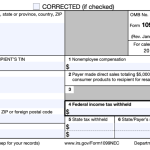Unleashing Potential: Experience The Power Of Site Development Zone Today!
Site Development Zone: Creating Opportunities for Growth
Introduction
Hello, Readers! In today’s article, we will explore the concept of site development zones and their significance in fostering economic growth and development. Site development zones are designated areas that offer various incentives and benefits to businesses and investors, aiming to attract investments, boost employment opportunities, and drive regional development. In this article, we will delve into the what, who, when, where, why, and how of site development zones, as well as their advantages, disadvantages, and frequently asked questions. So, let’s dive in and discover how site development zones can create new avenues for progress and prosperity.
1 Picture Gallery: Unleashing Potential: Experience The Power Of Site Development Zone Today!

What is a Site Development Zone?
🔍 Site development zones, also known as economic zones or industrial parks, are specific areas within a country or region that are strategically designated for development and industrial activities. These zones are typically equipped with the necessary infrastructure, facilities, and support services to attract businesses, both domestic and foreign, to set up operations. Site development zones aim to create an environment conducive to economic growth, innovation, and job creation.

Image Source: mostaqbal.jo
🔍 In site development zones, businesses are often offered incentives such as tax breaks, streamlined administrative processes, access to utilities, and enhanced access to transportation networks. These benefits incentivize businesses to establish operations in these zones, attracting investments, generating employment, and contributing to the overall economic development of the region.
🔍 Site development zones can take various forms, including industrial estates, free trade zones, special economic zones, technology parks, and innovation hubs. The specific focus and incentives offered by each zone may vary depending on the goals and priorities of the governing authorities.
Who Benefits from Site Development Zones?
🔍 Site development zones benefit a wide range of stakeholders, including businesses, investors, local communities, and the overall economy. Businesses and investors gain access to a favorable business environment, reduced operational costs, and improved infrastructure, enabling them to expand operations, increase productivity, and tap into new markets.
🔍 Local communities benefit from job creations, as businesses operating in site development zones provide employment opportunities for the local workforce. Additionally, the development of these zones often leads to improvements in local infrastructure and public services, enhancing the overall quality of life for residents.
🔍 The overall economy benefits from increased investments, enhanced productivity, and the creation of a multiplier effect. Site development zones attract both domestic and foreign investments, bringing in capital, knowledge, and technology transfer, which stimulate economic growth, diversification, and innovation.
When and Where Are Site Development Zones Established?
🔍 Site development zones are established by national or regional governments based on their economic development strategies and long-term goals. The timing and location of these zones depend on various factors, including the availability of suitable land, infrastructure, and market demand.
🔍 Site development zones are typically located near major transportation hubs, such as airports, ports, or highways, to facilitate the movement of goods and people. They may also be situated in close proximity to research institutions, universities, or industrial clusters, fostering collaboration, innovation, and knowledge-sharing.
🔍 The establishment of site development zones is often part of a broader economic development plan, aimed at driving regional development, attracting investments, and creating a competitive advantage in specific sectors or industries.
Why Are Site Development Zones Important?
🔍 Site development zones play a crucial role in fostering economic growth, attracting investments, and promoting regional development. By offering various incentives and benefits, these zones create an environment conducive to business expansion, innovation, and job creation.
🔍 Site development zones contribute to the diversification of the economy by attracting investments in specific sectors or industries. This diversification reduces the dependence on a single industry, mitigating the risks associated with economic volatility and creating a more resilient and sustainable economy.
🔍 Additionally, site development zones stimulate the growth of local businesses and suppliers, as they often require goods and services from the surrounding areas. This leads to the development of a supportive ecosystem, enabling businesses to thrive and creating a multiplier effect on the local economy.
How Do Site Development Zones Operate?
🔍 Site development zones operate under specific regulations and guidelines set by the governing authorities. These regulations outline the incentives, obligations, and requirements for businesses operating within the zone.
🔍 Businesses interested in establishing operations in site development zones typically go through an application process, where they submit proposals outlining their business plans, projected investments, and expected benefits to the local economy. The governing authorities evaluate these proposals and select businesses that align with the strategic goals and priorities of the zone.
🔍 Once approved, businesses enjoy the incentives offered by the zone, such as tax breaks, simplified administrative procedures, and access to infrastructure and support services. They are also expected to comply with the regulations and contribute to the local economy through job creation, technology transfer, and participation in community development initiatives.
Advantages and Disadvantages of Site Development Zones
🔍 Advantages
1. 🌟 Attracting Investments: Site development zones are effective in attracting domestic and foreign investments, creating new business opportunities and boosting economic growth.
2. 🌟 Job Creation: The establishment of site development zones leads to increased employment opportunities, benefiting the local workforce and reducing unemployment rates.
3. 🌟 Infrastructure Development: These zones often stimulate the development of infrastructure, including roads, utilities, and digital connectivity, which benefit the entire region.
4. 🌟 Knowledge Transfer: Site development zones facilitate knowledge transfer through collaboration between businesses, research institutions, and universities, driving innovation and technological advancements.
5. 🌟 Industry Diversification: By attracting investments in specific sectors or industries, site development zones contribute to the diversification of the economy, reducing reliance on a single industry.
🔍 Disadvantages
1. ⚠️ Land and Resource Constraints: Establishing site development zones may require the acquisition of land, which can pose challenges in terms of availability, displacement of local communities, and environmental concerns.
2. ⚠️ Inequality: If not managed properly, site development zones can exacerbate income inequality, with benefits disproportionately favoring businesses and investors rather than the local communities.
3. ⚠️ Regulatory Compliance: Businesses operating in site development zones must adhere to specific regulations and requirements, which may involve additional costs and administrative burdens.
4. ⚠️ Competition and Market Saturation: The proliferation of site development zones may lead to increased competition among businesses within the same industry, potentially saturating the market and reducing profit margins.
5. ⚠️ Economic Dependence: Overreliance on site development zones as a primary driver of economic growth can pose risks if the zone’s supporting infrastructure or incentives are not sustainable in the long run.
Frequently Asked Questions about Site Development Zones
1. What types of businesses are eligible to operate in site development zones?
Businesses across various sectors can operate in site development zones, including manufacturing, logistics, technology, research and development, and services. The specific eligibility criteria may vary depending on the zone’s focus.
2. How long do businesses typically operate in site development zones?
The duration of operation in site development zones can vary. Some businesses may choose to establish long-term operations, while others may utilize the zone for specific projects or periods. It depends on the business’s goals and the incentives offered by the zone.
3. Are site development zones only beneficial for large corporations?
No, site development zones offer benefits to businesses of all sizes, from large corporations to small and medium-sized enterprises (SMEs). These zones provide opportunities for businesses to grow, expand their operations, and access a favorable business environment.
4. How do site development zones contribute to sustainable development?
Site development zones contribute to sustainable development by promoting economic growth, job creation, and industry diversification. They also drive the development of sustainable infrastructure, encourage innovation, and foster collaboration between businesses, researchers, and academia.
5. Can businesses collaborate within site development zones?
Absolutely! Site development zones encourage collaboration and knowledge-sharing among businesses. Partnerships, joint ventures, and research collaborations are often fostered within these zones, creating opportunities for businesses to leverage each other’s strengths and drive mutual growth.
Conclusion
In conclusion, site development zones are strategic areas designated to attract investments, support economic growth, and drive regional development. Through incentives and benefits, these zones create an environment that encourages businesses to establish operations, leading to job creation, infrastructure development, and industry diversification. While site development zones offer numerous advantages, it is crucial to address their potential disadvantages and ensure inclusive and sustainable growth. By harnessing the potential of site development zones, countries and regions can unlock new avenues for progress, prosperity, and resilience in an increasingly competitive global economy.
Final Remarks
Disclaimer: The information provided in this article is for informational purposes only and should not be considered as legal, financial, or investment advice. Readers are advised to consult with relevant professionals and authorities before making any decisions based on the information provided.
This post topic: Programming



